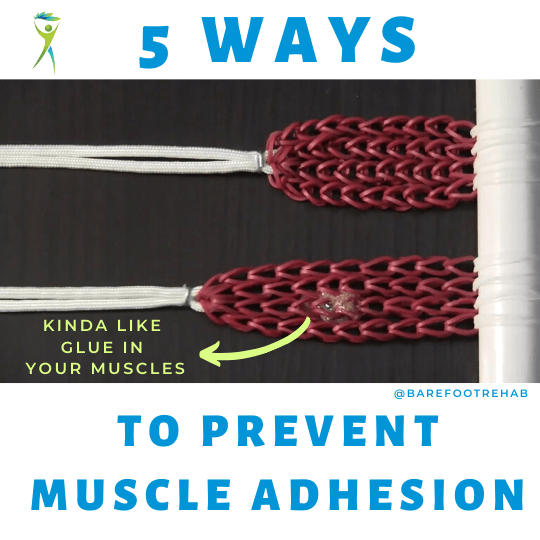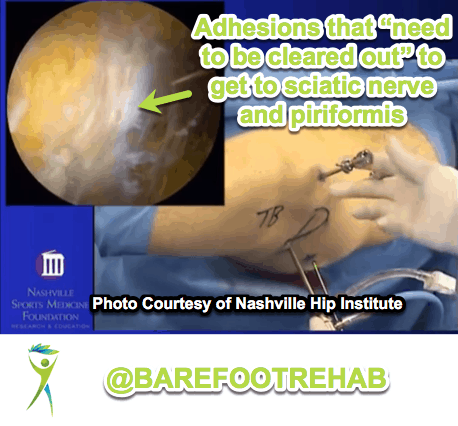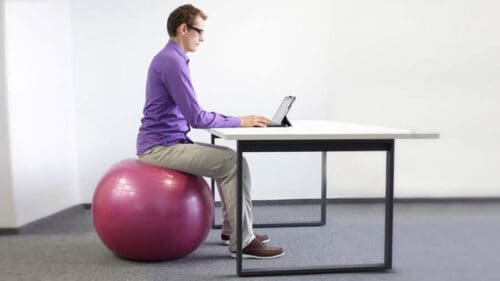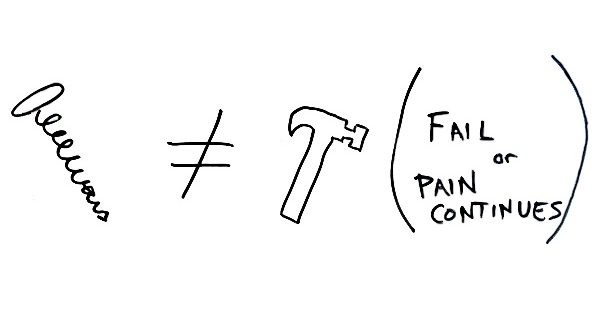
29 Feb Top 5 Ways to Prevent Adhesion (In the Muscles) From Building Up
Adhesion model and image above (Learn how to Prevent Adhesion below!) courtesy of Integrative Diagnosis.
A recent, beautiful man of a patient named Jesse who likes “nuts” (I’m poking fun at him) asked:
Hey man,
Something that I’ve been really curious about, and maybe you’ve already covered this in some of your content and I missed it, but I’m wondering how we can prevent adhesion from happening in the first place. Or once it’s removed, how do we stop it from forming again? I can already predict your answer… “Stop doing dumb things that aren’t good for your body!”
I get that. But I also feel like most things that are fun are also dumb things that aren’t good for my body haha. So what is the answer? Where is the balance? Why would weight training, for example, cause pain and adhesion in one person and not another? Is it based on intensity? Warmup? Stretching? Diet?
I suppose my question in its most basic form is, how can I continue to do the things that I enjoy and only come to visit you on a social, friendly level instead of limping in, needing treatment?
Love the question Jesse!
Let me take a stab out of it.
If you prefer video, here’s a 6 minute summary of this blog post.
#1: Maximize Muscle Stress and Minimize Joint Stress
The joints allow the bony pieces of our body to move.
The muscles do the moving.
When our muscles are weak, the joints take excessive stress. When you’re young, it’s no biggie. As you get old the joints degenerate, excessive stress on the joints leads to pain and faster degeneration.
When our muscles are strong, the joints take minimal stress. Both when you’re young and as you age.
To maximize the longevity and ability of your body to move for as many pain-free decades as possible, you should seek to, relatively:
- maximize muscle stress
- minimize joint stress
Let’s take the low back, arguably the MOST COMMON area of the body to degenerate in human beings.
Divide movements into:
- LOW load for the joint
- MODERATE load for the joint
- HIGH load for the joint.
Think of load as an amount of work, like a faucet dripping a certain amount of water.

Capacity is an amount of work your body (or on a more specific level, your joints, can handle), like a bucket that contains the water.

For an in-depth discussion of Water in Your Bucket, check out out Load and Capacity post.
The more degenerated your joints, the smaller your bucket (capacity) and the less water (load) you can safely fit in your bucket.
Any bilateral leg movements fall into the MODERATE – HIGH load on the LOW BACK category. Picture a faucet gushing out water.
Bilateral leg movements include anything where your feet are next to each other:
- squats (yes, even air squats)
- deadlifts
- frog hops
- kettlebell swings
Single leg movements fall into the LOW – MODERATE load on the LOW BACK category (picture a faucet slowly dripping out water) and include anything where your feet are staggered, one in front and one in back:
- walking
- split squats
- lunges
- golfer’s bend
The crazy thing about single leg movements is that they can have VERY HIGH loads on the LEGS, keeping the legs very strong, while buffering against low back load.
Then, the core or spine can be trained in other HIGH muscle load, LOW low back joint load movements like:
- hollow bodies
- planks
- side-planks
- good mornings (these movements are bilateral leg and among the highest load on the low back movements we will have our chronic pain patients do. We’ll progress up to a 15-25# DB across the chest for 2 sets of 15 reps daily)
- pallof presses.
I, Dr. Chris, have the following pathologies in my body:
- moderately damaged lumbar discs
- right torn hip labrum
- moderate degeneration in the front of my right ankle
- articular cartilage tear in left knee
- severe finger and wrist arthritis on both hands
- moderately degenerated lower cervical spine
- bilateral torn shoulder labrums
In this video, I explain my workouts to a patient that I’ve been doing for the past 2 years, leaving me more pain-free and stronger than I’ve ever felt.
NOTE: The goal is some MUSCLE soreness. I have ZERO joint soreness after a workout. If I ever do, I modify my next workout and proceed accordingly.
How Much LOAD Joint by Joint?
Here’s a super quick-and-dirty cheat sheet for what has more or less load on a few major joints.
Got shoulder pain?
Push-ups are less load than bench press.
Dips are less load then pull-ups.
Got wrist pain?
Push-ups on a dumbbell with the wrist neutral and straight is less loan than push-ups on the floor with the wrist extended bcakwards.
Got knee, calf, ankle, or foot pain?
Walking is obviously better than running.
A bike is better than running.
I’ll go more in depth on another post if there’s interest.
#2: Let Your Muscles Be Fresh and Not Tight and Sore At Least 2 Days/Week
Adhesion forms when your muscles are chronically tight.
Think of blood vessels like highways.
Those highways are open for your red blood cells to travel, carrying oxygen, when your muscles are relaxed.
When your muscles are tight, the diameter of those blood vessels gets narrowed, causing a traffic jam of red blood cells that can’t deliver oxygen.
Less oxygen leads to pinball-like free radicals to bounce around, causing mini holes of damage.
The body comes to “spackle” those mini holes with cells called fibroblasts that patch up the holes with adhesion.
Below is a picture of adhesion (notice the spider-webby substance) between the piriformis muscle and the sciatic nerve.

When your muscles are always tight and sore, you’re virtually guaranteeing the formation of adhesion build-up due to constricted blood vessels.
It’s a good habit to allow your muscles to recover to full suppleness at least 2 days a week.
Loose muscles will allow your blood to flow through, removing all waste products and free radicals and prevent the need for any adhesion removal treatment.
Sure, foam rolling and massage is helpful for recovery.
Better to not need to foam roll or massage in the first place.
Yes, there is such a thing as TOO MUCH exercise for the person who wants to live a fit life of longevity.
A Quick Note on Intensity to Prevent Adhesion
After reading this post, Jesse had one more question:
I think my only remaining question is with regards to intensity. What would be more likely to cause adhesion, finding your 1 rep max bicep curl or performing 200 curls with a 2 lb dumbbell? Or neither, necessarily?
I answered:
Higher reps would create more adhesion. It’s more time under tension.
Your body can maintain it’s fitness with strength and power in the 3-5 rep range, which doesn’t tear muscles as much as workouts in the 8-12 rep range.
The only caveat to this if your joints can’t handle higher weight due to too much degeneration.
This is why EVERY fitness program must be individualized.
Realistically, varying your workouts in all ranges is key. Some days, do heavier weights at 3-5 reps for strength and power. Other days, do moderate weights with 8-12 reps for thicker muscles. Maybe even other days, do workouts in the 15-20 rep range for stamina.
#3: Avoid End-Range Fitness (Or Life) Movements
Let’s say you have a pinch in the front of your hip when you squat or when your chiropractor or PT brings your thigh to your chest.
This pinch could be an:
- impingement
- labrum tear
- disc injury
Regardless of what your pain is … it doesn’t make sense to go into that range (AND FEELING THAT PINCH) when you’re workout out to get fitter.
Your gambling will inevitably lead to a worsening of your symptoms.
If you don’t want to get your symptoms DIAGNOSED and FIXED, then avoid the range of motion where you feel your symptoms.
You’ll be able to workout way longer than if you push the boundaries that your body is clearly trying to make you aware of.
#4: Deload Outside of Your Workout
Over the years, we’ve had a handful of yogi-ish patients who insisted on working while sitting on a physioball.
They wonder why they hurt their back.

Facetiously, we ask them:
If I asked you to do air deadlifts for any period of time over an hour, you’d think I was crazy.
What’s the difference between sitting upright on a ball and doing air deadlifts?
It’s true that your core muscles are working harder when you DO NOT have back support.
But MORE exercise doesn’t mean a fitter body.
Remember, everything in life is about balance.
That’s why the Sit-Slide-Lean Rule is so important if you value the longevity of your low back and neck and if you want to recover fully from your workouts.
Doing gentle movements around the house or normal activities of daily living is fine.
Just be mindful of not doing a CrossFit workout or running 5k four times a day if you want to keep doing it 6 months down the road.
Give your body a chance to rest.
#5: De-stress, Da Diet, and Da Sleep
People are often surprised when they come in for a consult at Barefoot Rehab and they’re overweight when we say:
You need to hire a lifestyle coach or functional medicine doctor to help you lose weight first.
You can’t fix a screw with a hammer. You need to get a screwdriver.

We need to get our immune system operating at 100% if we want to live a long, healthy life and prevent adhesion from coming back.
Eating an anti-inflammatory diet and developing a healthy food mindset as discussed by Chris Kresser are integral to healing fully and quickly.
Eating grains, dairy, sugar, and alcohol causes our immune system to be hyper-vigilant and fail at its job.
Add in a little stress and start cursing out the traffic, then a chronic Fight-or-Flight Mode will further perpetuate your state of non-healing.
Instead, start meditating, learn how to relax, and be happy or joyful.
As Tony Robbins says:
The #1 choice we all need to make each day is …
Do I want to be happy?
Sleep is the time when we heal and recover.
We want to go to sleep as close as the sun sets.
Our body releases growth hormone and melatonin.
THe later we go to bed, the more disturbed we are when going to bed, we’re missing out on those healing, recovering hormones.
What do you think about how to prevent adhesion?
Is this helpful?
What further questions do you have?
Let us know and we’ll address any of your thoughts, questions, or create more content for you.
If you want to live to 80 or 90 and be fit and pain-free, these seemingly tiny details matter.
 What are your thoughts about how to prevent adhesion? Have you found any hacks to prevent your pain from coming back? Share in the comments below.
What are your thoughts about how to prevent adhesion? Have you found any hacks to prevent your pain from coming back? Share in the comments below.

No Comments